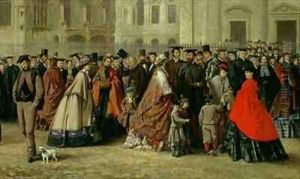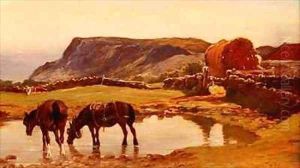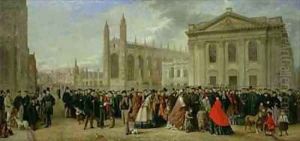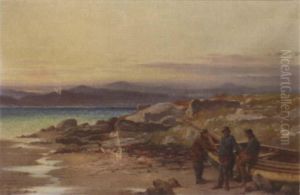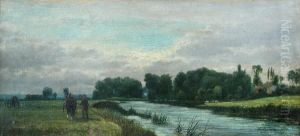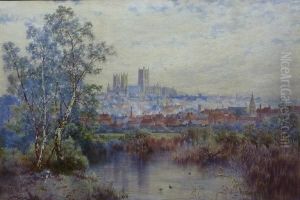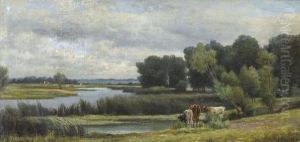Robert Farren Paintings
Robert Farren, born in 1832 in Cambridge, England, was a notable British artist whose career spanned much of the 19th century, a period rich in artistic innovation and evolution. Farren was primarily known for his landscape paintings, capturing the serene beauty of the English countryside with a distinctive style that emphasized the play of light and shadow, an approach that resonated with the techniques of the Impressionists, though he remained largely traditional in his methodology.
Educated locally in Cambridge, Farren was largely self-taught as an artist, which was not uncommon during his time. The lack of formal art education did not hinder his development; instead, it allowed him a degree of freedom to explore and refine his style without the constraints of academic dogma. He became particularly adept at depicting the atmospheric conditions of rural and urban landscapes, a skill that earned him recognition among his contemporaries.
Throughout his career, Farren exhibited extensively, including at prestigious venues like the Royal Academy in London, though he remained closely associated with his hometown of Cambridge. His exhibitions at the Royal Academy and other galleries helped to establish his reputation as a skilled landscape painter.
Despite his success, Robert Farren did not gain the same level of fame as some of his contemporaries. However, his contributions to British landscape painting have been reassessed in recent years, with art historians recognizing the subtle nuances of his work and its place within the broader context of 19th-century British art. His paintings are now valued not just for their aesthetic beauty but also for their historical significance, offering insights into the English landscape and society of his time.
Farren's legacy is preserved through his works, which are held in various collections, including museums and galleries in Cambridge, where he spent much of his life. He continued to paint and exhibit his work until his death in 1910, leaving behind a body of work that continues to be appreciated by art lovers and historians alike. His dedication to capturing the essence of the English landscape has ensured his place in the annals of British art history.
